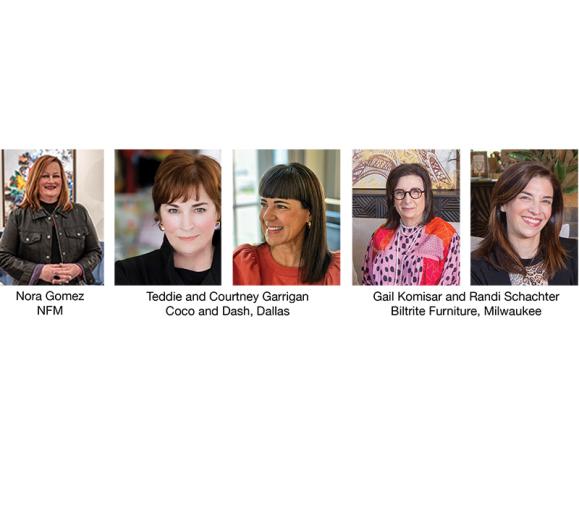Just when we were all designing responsive websites to meet mobile search demands, consumers have turned the tables on us again.
Last year, Google announced that 20 percent of queries through its app and on Android devices are done through voice search. In the grand scheme of things, 20 percent may seem minuscule, but consider this: about 60 percent of all searches are done on mobile devices, and Google processes about 3.5 billion searches per day. In theory, about 2.1 billion Google searches each day happen on mobile devices. If 20 percent of those searches are done through voice search?
That’s 420 million.
Voice search is rapidly becoming the go-to search for busy and on-the-go consumers. They’re asking Alexa for the weather report on their way out the door. They’re asking Cortana for directions while in the car. When cooking dinner and helping with homework, they’re asking Google Assistant quick questions like, “How many quarts in a gallon?” and “What’s the state capital of North Dakota?”
Consumers using voice search want two things: the answer and fast. If your business can deliver both — whether it’s a general query or a “furniture showroom near me” local search — then there’s a growing section of consumers you may be able to target. And since this trend is still fairly new, you have a strong chance of knocking out your competition.
Assuming you can adapt fast enough.
Consumer behavior and voice search
Voice search would be nowhere today without Siri. First introduced as a key component of the iPhone 4S in 2011, Siri got people talking. And once they got used to talking into their phones, companies like Amazon and Google wondered what else consumers might talk to.
“Because we have gotten used to the idea of talking to our phone,” says Richard Sexton, Chief Product Officer at MicroD Inc., “it makes talking to everything else a natural reaction.”
Their bets paid off. Sexton says about 25 million voice-enabled speakers reside in homes today. His company, MicroD, specializes in building digital platforms for home furnishings retailers, and that includes helping them understand the growing trend of voice search as it relates to digital marketing. At High Point Market this fall, Sexton gave a talk to a group of retailers in the Home Furnishings Association Resource Center about why voice search matters and why it’s grown. During his talk, Sexton outlined the two main uses for voice search: general queries and local searches.
You probably rely on Google’s answer boxes — those text boxes at the top of a Google search that give you an answer to your query and a link to the source of the information — for your definite and how-to questions. How do you clean velvet? Roger + Chris’ blog says “If the fabric is wet, use a paper towel or soft cloth to soak up the liquid.” When was Crystorama Lighting founded? According to Lighting New York — the top answer — “Crystorama was founded in Brooklyn, New York, in 1958 by Abraham Kleinberg.” Clearly, any site can answer these questions, and according to stats from Search Engine Watch, the site that appears in that box takes 32 percent of the traffic. That’s a substantial amount you could be gaining — or losing.
Now, these answer boxes won’t be the same for every search. Google, Alexa, Siri and other assistants use the customer info and past behaviors to decide how to answer queries and which sites to show.
“It’s not static,” Sexton explains. “Anybody can have that position if, according to Google’s criteria, you’re answering that question.”
The other search consumers primarily use virtual assistants for is local searches: Eye doctors near me. Taco joints near me. Coffee shops near Water Tower Place. When looking for a store or restaurant, consumers are beginning to use voice search more, and depending on how they’re doing it, businesses could face a major problem.
Right now, consumers can do voice searches with or without a virtual assistant. Google gives users on desktops and mobile devices the voice search option — just click on the microphone in the search box and ask your question. If you enter “lighting showrooms near me” on your phone or desktop, you’ll probably get an interactive map and list of maybe six to 10 stores, depending on your location.
But what if you ask Alexa for lighting showrooms?
Sexton tried this himself at his home in Concord, MA. His Google Assistant listed three answers — that’s it.
“If they’re not showing up in the top three results, they’re invisible and that is really scary,” he says.
Paid ads and voice search
If the prospect of competing with all the other local lighting and furniture stores near you for three spots in a voice search doesn’t scare you, then the prospect of paid ads in voice search should.
You will be glad to know that right now, Google and other search engines haven’t quite figured out how to monetize voice search, and you can thank consumer experience for that. Google needs to find the sweet spot where the consumer experience is still seamless, but companies can still reach consumers. Tip the scale too much to one side and Google could either lose searchers or advertisers.
Eric Marcy, President of search engine intelligence agency AdGooRoo and Digital Watch contributor, follows digital consumer behavior for a living. His company started watching voice search trends during the summer of 2016, trying to anticipate how search engines might change their paid ad strategies.
If Google Assistant, Alexa and other assistants list just three locations when doing a local search, one of those positions may be a designated ad slot.
“I definitely see at least one becomes an ad spot depending on how many voice searches are done,” Marcy says.
For a small retailer with a modest advertising budget, all this may seem overwhelming, but Marcy feels cautiously optimistic. Although big-box retailers may have the marketing budget to pay for voice search ads, Marcy points out that companies like Home Depot and Lowe’s focus on national ad campaigns more than local niche markets. Small businesses with strong paid and organic local search strategies — the ones that make it as easy as possible to be found — will succeed with voice search, Marcy says.
“It’s a whole concept that is about convenience.”
Present and future behaviors
When Sexton asked his Google Assistant for lighting showrooms near him, only one of Google’s three answers was an actual lighting showroom. So if you’re a consumer, what do you do? Do you pull out your phone and look for more options, or do you go with the one good option?
“If the voice search result gives them familiar results,” Sexton says, “they’ll probably stick just with that. If it returns some nonsensical results, or stores that don’t align with what they expected, they will probably revert to a traditional text-based search.”
Marcy says that for the time being, it will probably depend on how much research the consumer needs to make a buying decision. A consumer buying a new sofa might research and shop around, but a consumer buying light bulbs on his or her way home from work?
“If you truly are multitasking or on the go, I think the closest location becomes the easiest,” Marcy says.
But what about in three or even five years from now, when voice search accounts for half of all searches? As Marcy observes, by then, two generations— Millennials and Gen Zers — will have grown up with this technology, and they might feel comfortable trusting Alexa or Siri. As Amazon, Apple and Google improve their technology, consumers will place greater trust in it.
At first glance, going after that 20 percent of searchers — be they on-the-go or researchers — may seem like a waste of time, but think of it this way: It took just six years from Siri’s launch for voice search to take up 20 percent of the market. Imagine what another six years will bring.
Panicking about Voice Search? Don’t.
Here are five free ways to improve your organic local search strategy right now.
1. Claim your free Google My Business listing. Both Sexton and Marcy agree: this is essential.
2. Make sure your listings (address, telephone number, hours of operation) look the same on Google My Business, your website and any other online pages that represents your business.
3. Use a free tool like Google Keyword Planner to find common local search terms (“furniture store in Palm Beach, CA”) and potential queries you could answer (“Are LEDs dimmable?”).
4. Optimize the content on your website with your local search keywords. Add them to page titles, meta descriptions and body paragraphs.
5. Create an FAQ page and answer some of the top-searched queries you researched. Go one step further and start blogging to answer more of these questions.







